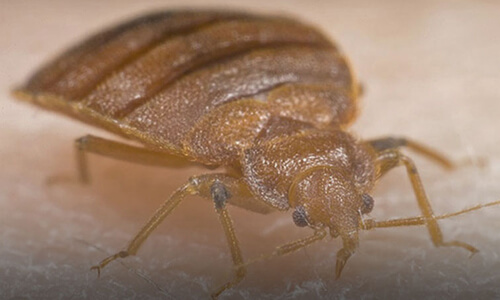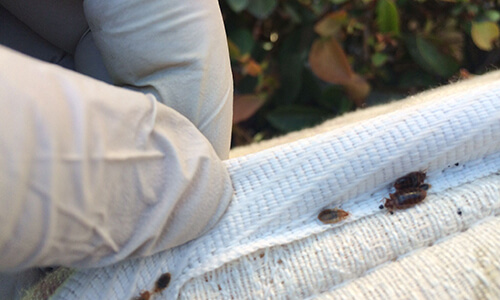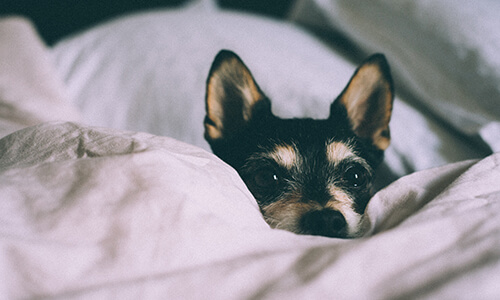

What are bed bugs?
Bed bugs are parasitic insects. Human blood is their preferred food, but they will also feed on rodents, bats, birds and pets, if humans aren’t available.
How do bed bugs grow and develop?
During its life cycle, a bed bug hatches from an egg into a nymph and molts (sheds its old skin) five times before becoming a full sized adult, about the size of an apple seed. Eggs are glued onto a surface by the adult female bed bug. All nymphal stages and adults require blood meals.
What do bed bugs look like?
Adult bed bugs are small, but visible to the naked eye. An adult bed bug is from 1/4 – 3/8 inches long and reddish brown. Bed bugs have an oval shape with a flattened body when unfed; their body becomes swollen after they have fed. The young nymph (immature) that has just hatched from the egg is less than 1/10 inches long and nearly colorless, but it becomes red after taking a blood meal. There are five nymphal stages, with each stage slightly larger than the preceding one. Nymphs typically are yellowish brown to reddish brown.
How do bed bugs move about?
Bed bugs cannot fly, but they can walk very fast. They are able to cling tightly to surfaces, and they can fit into very small cracks and crevices where they often hide during the day.
Where are bed bugs found?
Bed bugs can be found in places that are frequented or occupied by humans. Bed bugs are most commonly found in dwellings with a high rate of occupant turnover, such as hotels, hostels, dormitories, apartment complexes, movie theaters, and the like. Bed bugs also can infest private dwellings. Bed bugs can infest airplanes, ships, trains, and buses.
Where do bed bugs hide?
Bed bugs will hide in mattresses and box springs, bed frames, dressers, upholstered furniture and other furniture, cracks and crevices, electrical outlets, carpet tack strips, baseboards, window and door casings, drapery pleats, wall hangings, ceiling moldings, seams in wallpaper, etc. Bed bugs prefer to contact fabric, wood, and paper surfaces — all of which are common in human dwellings.
What are the tell-tale signs of bed bugs?
The most obvious signs of bed bugs are small black spots (feces) deposited in and near bed bug hiding places. Shed bed bug skins, egg shells and live bed bugs also may be found. Another sign is blood stains, which typically occur when a bed bug is squashed. Itchy red welts may be the result of bed bug bites, but other insects, arthropods and medical conditions can produce similar reactions. It is important to confirm whether the bites were caused by bed bugs by conducting a bed bug inspection.
When do bed bugs feed?
Bed bugs typically bite at night. However, they also can feed during the daytime.
What do bed bug bites look like?
Bed bug bite reactions vary from person to person. Humans often exhibit a range of reactions to the bed bugs injected saliva. Some people exhibit no reaction whatsoever and others experience a raised itchy red welt at the site of the bite. Bed bug bite reactions often appear as two or more bites in a row. They often occur on exposed areas of the body, such as the face, neck, arms and shoulders. Bed bug bites may resemble bite reactions caused by other insects and other medical conditions.
How do I treat bites?
Consult your physician. Anti-itching medications and antibiotic salves applied to the skin may be helpful.
Now Providing Bed Bug Dog Inspections





